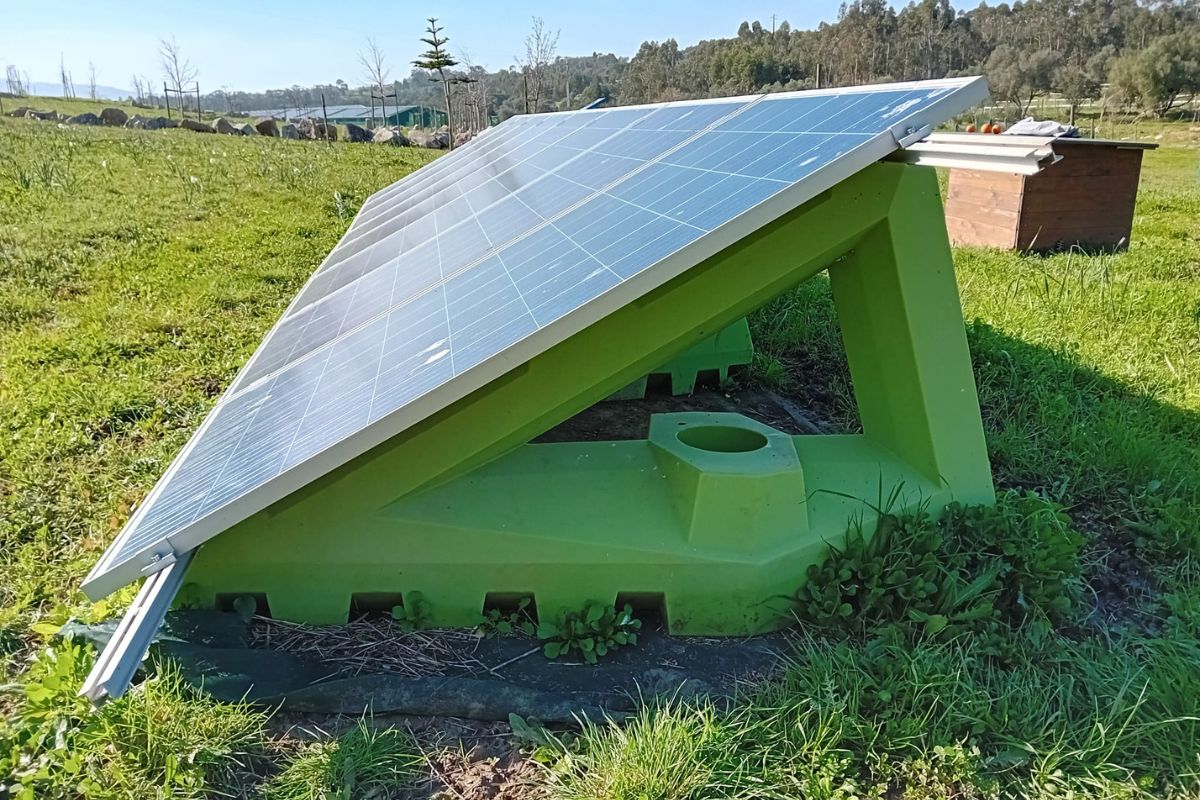Ballasts for Photovoltaic Systems: Types and Innovative Solutions

When it comes to ground-mounted photovoltaic systems, choosing the right ballast for photovoltaic panels is essential to ensure stability, durability, and optimal performance. Ballasts play a key role in keeping the panels firmly anchored to the structure, withstanding wind, rain, and mechanical stresses.
Nexus, a company specialized in the production of mounting systems and ballasts for photovoltaic panels, offers innovative plastic solutions designed to simplify installation, reduce costs, and improve the energy efficiency of the system. Thanks to the use of advanced materials such as fiberglass-reinforced nylon and the possibility of configuring custom structures, Nexus has become a leading reference point in the field of photovoltaic mounting structures.
- Photovoltaic ballasts: what they are and why they matter
- Nexus solutions for photovoltaic ballasts and structures
- How to choose the right ballast for photovoltaic panels
- The advantages of Nexus ballasts for ground-mounted photovoltaic systems
Photovoltaic ballasts: what they are and why they matter
Photovoltaic ballasts are structural elements designed to provide stability and anchoring for solar panels, preventing them from being lifted by the wind or displaced by vibrations and environmental factors. Unlike traditional mounting systems, which require drilling or ground anchoring, ballasts use their weight to keep the structure securely in place.
This solution is particularly advantageous for ground-mounted photovoltaic systems and flat roofs, where drilling could compromise surface integrity or require invasive interventions.
The main features of ballasts for photovoltaic panels include:
- Optimal stability: resistance to wind, rain, and environmental stresses.
- Quick installation: systems designed to simplify assembly and reduce operational time.
- Versatile application: adaptable to different types of terrain and plant configurations.
- Long-lasting durability: high-quality materials resistant to UV rays and weather conditions.
An important aspect to consider is the difference between a concrete ballast and a ballast made from alternative materials. While concrete is a common choice, it has limitations in terms of weight, transportation, and ease of installation. Nexus solutions, made of reinforced plastic, offer lightness, strength, and versatility, making the entire process easier and more sustainable.
Nexus solutions for photovoltaic ballasts and structures
Nexus has developed a wide range of mounting systems and photovoltaic ballasts, designed to meet the needs of installers and designers who demand safety, efficiency, and speed. With years of experience in the field and a constant focus on technological innovation, the company offers photovoltaic structures that combine innovation, strength, and sustainability.
The main solutions include:
- Ground-mounted ballasts: ideal for large-scale solar farms, ensuring stability even in challenging weather conditions.
- Pultruded profiles: modular, lightweight, and resistant structures designed to provide secure and durable mounting.
- Adjustable tilters: allow you to optimize the panel inclination angle, maximizing energy production.
- Innovative materials: all components are made from fiberglass-reinforced nylon, also available in the V0 flame-retardant version, ensuring safety and long-term performance.
Compared to traditional concrete ballasts, Nexus solutions provide significant advantages:
- Reduced weight: easier transport and handling.
- Superior strength: certified materials tested in accredited laboratories such as Dekra.
- Versatile application: compatible with different types of installations and surfaces.
- Environmental sustainability: use of eco-friendly and recyclable materials.
Thanks to these features, Nexus systems represent a strategic choice for those seeking to install efficient and durable photovoltaic plants without compromising site aesthetics and functionality.
How to choose the right ballast for photovoltaic panels
The choice of ballast for photovoltaic panels should be based on various technical and environmental factors. A proper evaluation ensures optimal stability, safety, and energy performance. Key aspects to consider include:
Climatic conditions
In windy areas or regions prone to extreme weather, it is essential to use robust ballasts and tested mounting systems to prevent panel movement or lifting.
Type of terrain
Compact or sandy soils, flat or sloped surfaces require different configurations for photovoltaic structures. Nexus provides versatile solutions that adapt to any context.
Number and layout of panels
The design of the mounting system must consider the total number of modules, installation rows, and string arrangements. Accurate calculations of brackets and plates optimize costs and enhance plant performance.
Materials and maintenance
Unlike concrete ballasts, which require more logistical effort and may deteriorate over time, Nexus reinforced plastic ballasts ensure long-lasting resistance without frequent maintenance.
The ultimate goal is to combine safety, efficiency, and sustainability by selecting a mounting system that minimizes installation and maintenance costs while maximizing energy output.
The advantages of Nexus ballasts for ground-mounted photovoltaic systems
Choosing Nexus means opting for quality, reliability, and innovation. The company’s photovoltaic mounting systems and ballasts offer numerous advantages over traditional solutions:
Certified stability: all Nexus products are tested in accredited laboratories such as Dekra.
Fast and easy installation: lightweight, modular components that are easy to handle and transport.
Maximum energy efficiency: design optimized to improve panel ventilation and reduce overheating.
Versatile applications: solutions compatible with various types of terrain and inclinations.
Lower installation costs: lightweight materials and quick assembly processes.
Long-term durability: components resistant to UV rays, temperature fluctuations, and harsh weather.
Sustainability: use of eco-friendly and recyclable materials, aligned with green energy trends.
Thanks to these features, Nexus is the strategic partner for companies, designers, and installers seeking to build high-performance and secure ground-mounted photovoltaic systems.
In conclusion, selecting the right ballasts for photovoltaic systems is essential to ensure stability, safety, and efficiency. With its innovative solutions, high-quality materials, and extensive experience, Nexus is the ideal choice for those seeking reliable and durable mounting systems. Whether you are planning a new installation or upgrading an existing one, trust Nexus to find the best solution for your needs.








